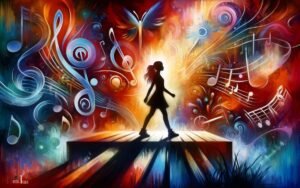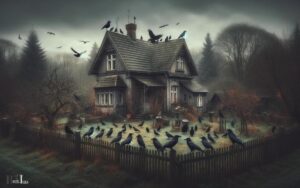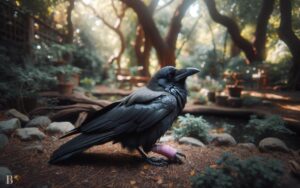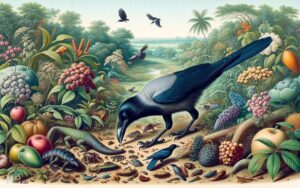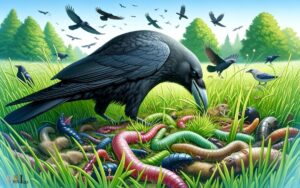What Do Crows Symbolize in Literature? Death, Wisdom!
Crows in literature symbolize a variety of concepts including death, transformation, wisdom, and the mysteries of life.
Their presence in stories often heralds significant change or insight, reflecting their complex role in human myth and folklore.
The symbolism of crows in literature is multifaceted:
Crows hold a place in literature as enigmatic figures, their black wings casting shadows over stories rich with symbolism and intrigue, reflecting the depth of human emotions and the enigmas of life.
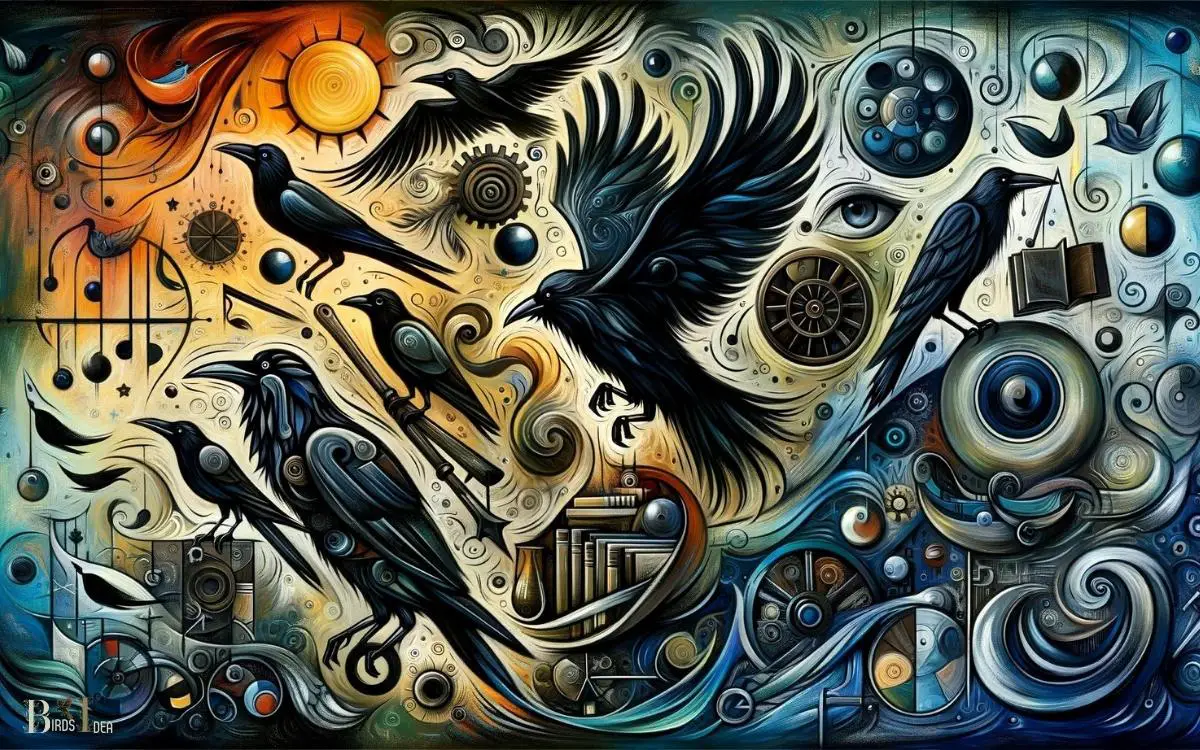
Key Takeaway
Historical Associations With Crows
Crows have long been associated with various historical and cultural symbolism, often representing both positive and negative attributes in different societies.
In many ancient cultures, crows were revered as symbols of wisdom and intelligence. For instance, in Greek mythology, crows were associated with the god Apollo and were believed to be the keepers of sacred knowledge.
However, in some cultures, crows have been viewed as harbingers of death or bad omens. In Norse mythology, they were linked to the god Odin, who was often accompanied by two ravens.
The duality of the crow’s symbolism, embodying both positive and negative traits, has made it a compelling figure in literature and folklore throughout history.
This dichotomy continues to captivate authors and readers alike, adding depth and complexity to literary works.
Crows in Folklore and Storytelling
Cultural and Folklore Significance
Throughout literature, crows have been portrayed as ominous harbingers of death, deeply ingrained in cultural and folklore symbolism.
They have been associated with various cultural and folklore beliefs, including:
- Messengers of the Otherworld: In many cultures, crows are seen as messengers between the earthly realm and the spirit world.
- Guides for the Deceased: Some folklore depicts crows as guides for the souls of the deceased, leading them to the afterlife.
- Symbols of Transformation: Crows are often viewed as symbols of change, transformation, and rebirth, signifying the cyclical nature of life and death.
- Guardians of Sacred Knowledge: In some traditions, crows are considered guardians of esoteric knowledge and wisdom.
- Representations of Doom: Crows are often seen as omens of impending doom or as indicators of impending death.
This cultural and folklore significance adds depth to the symbolism of crows in storytelling.
Symbolism in Storytelling
In many literary works, crows are depicted as ominous harbingers of death, serving as a powerful symbol that conveys a sense of impending doom and mortality.
This symbolism is deeply rooted in cultural beliefs and has been utilized in storytelling to evoke a feeling of foreboding and the fragility of life.
The presence of crows in literature often signifies the imminence of tragedy or loss, adding a layer of depth and complexity to the narrative.
Their black feathers and haunting caws create an atmosphere of unease, captivating readers and drawing them into the dark and mysterious aspects of the story.
Crows as Symbols of Wisdom
Crows have long been associated with wisdom and knowledge in various cultures and literary works.
Their representation as symbols of cultural wisdom and intelligence is prevalent in many traditions.
In literature, crows often embody the idea of literary intelligence and are used to convey deeper meanings and insights.
Crows and Knowledge
Crows are often utilized in literature as symbols of wisdom and knowledge, representing the intelligence and insight associated with these birds.
In various cultures, crows are seen as carriers of profound knowledge and understanding. They are believed to possess the ability to see beyond the physical realm and into the spiritual world.
Crows are often associated with foresight and the ability to predict future events. In some mythologies, crows are depicted as messengers of the gods, delivering important information and guidance to humans.
Crows are considered to be highly adaptable birds, symbolizing the importance of flexibility and resourcefulness in acquiring knowledge.
Their keen observation skills and problem-solving abilities further emphasize their connection to wisdom and knowledge.
Moving forward to the subsequent section about ‘cultural wisdom representations’…
Cultural Wisdom Representations
Representing profound knowledge and insight, crows are universally regarded as carriers of wisdom and are often depicted as messengers of the gods in various cultural mythologies.
- In many Native American cultures, crows are seen as wise and are believed to embody the knowledge of the universe.
- The Celtic tradition also associates crows with wisdom, often portraying them as oracles or sources of guidance.
- In Hindu mythology, crows are associated with the god of death, Yama, and are considered to possess deep spiritual insight.
- In Japanese folklore, the Yatagarasu, a three-legged crow, is a symbol of divine intervention and guidance.
This consistent portrayal of crows as symbols of wisdom across diverse cultures reflects the universal human reverence for knowledge and the pursuit of understanding, transcending geographical and historical boundaries.
Literary Intelligence Symbolism
Universally regarded as carriers of wisdom, crows continue to serve as symbols of profound knowledge and insight in literature, reflecting the enduring human reverence for knowledge across diverse cultural traditions.
In literary works, crows symbolize:
- Intelligence: Crows are often depicted as intelligent creatures, capable of complex problem-solving and strategic thinking.
- Mysticism: They are associated with mysticism and the supernatural, often portrayed as messengers between the spiritual and physical worlds.
- Foreknowledge: Crows’ ability to predict events and foresee the future adds to their symbolism as bearers of wisdom.
- Adaptability: Their survival skills and adaptability in various environments symbolize the importance of flexibility and resourcefulness in acquiring wisdom.
- Silent Observation: Crows’ watchful and observant nature represents the value of silent contemplation and keen perception in gaining knowledge.
Crows in Mythology and Folklore
In mythology and folklore, the presence of crows has been deeply intertwined with various cultural beliefs and traditions. Across different civilizations, crows have been associated with both positive and negative symbolism.
In some cultures, they are revered as symbols of wisdom, intelligence, and guidance, while in others, they are seen as omens of bad luck, death, or the supernatural.
For example, in Norse mythology, the god Odin was accompanied by two ravens, Huginn and Muninn, who represented thought and memory.
Similarly, in Japanese folklore, the Yatagarasu, a three-legged crow, is considered a symbol of divine intervention and guidance.
These diverse mythological and folklore representations of crows highlight their significance and the powerful impact they have had on human imagination and cultural beliefs.
This rich tapestry of cultural associations sets the stage for exploring crows as agents of the supernatural.
Crows as Agents of the Supernatural
Crows are often portrayed as enigmatic messengers of the supernatural, embodying a sense of mystique and intrigue in literature.
In various literary works, crows are depicted as agents of the supernatural, symbolizing deeper meanings and conveying profound messages.
Here are five ways crows are represented as agents of the supernatural:
- Harbingers of Change: Crows are often seen as symbols of impending change or transformation in the natural or spiritual world.
- Guides to the Otherworld: In some cultures, crows are believed to guide souls to the afterlife, acting as intermediaries between the living and the spirit realm.
- Bearer of Secret Knowledge: Crows are associated with hidden knowledge, representing a link between the human and supernatural realms.
- Protectors of the Sacred: In certain mythologies, crows are guardians of sacred spaces, safeguarding them from malevolent forces.
- Omens and Prophecies: Crows are often viewed as omens, foretelling events and serving as messengers of fate.
Literary Depictions of Crows
In literature, authors frequently utilize crows as symbolic figures to convey themes of mystery, wisdom, and foreboding.
Crows are often depicted as enigmatic creatures that possess an otherworldly intelligence, serving as harbingers of impending events or as guardians of hidden knowledge.
In Edgar Allan Poe’s famous poem ‘The Raven,’ the eponymous bird serves as a haunting, foreboding presence, emphasizing the narrator’s descent into madness.
Similarly, in Ken Kesey’s novel ‘One Flew Over the Cuckoo’s Nest,’ the character Chief Bromden associates the crows with a sense of impending doom and the oppressive nature of the mental institution.
These literary depictions of crows illustrate their multifaceted symbolism, adding depth and complexity to the themes explored in the works.
Crows, therefore, become powerful symbols that resonate with readers seeking freedom from the constraints of conventional storytelling.
Conclusion
Crows have been historically associated with death, wisdom, and the supernatural in literature.
They have been depicted as harbingers of death, symbols of wisdom, and agents of the supernatural in mythology and folklore.
In literature, crows have been used to convey an ominous and mysterious atmosphere, adding depth and complexity to the stories in which they appear. They are like dark silhouettes against the vivid backdrop of human experience.


